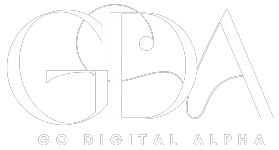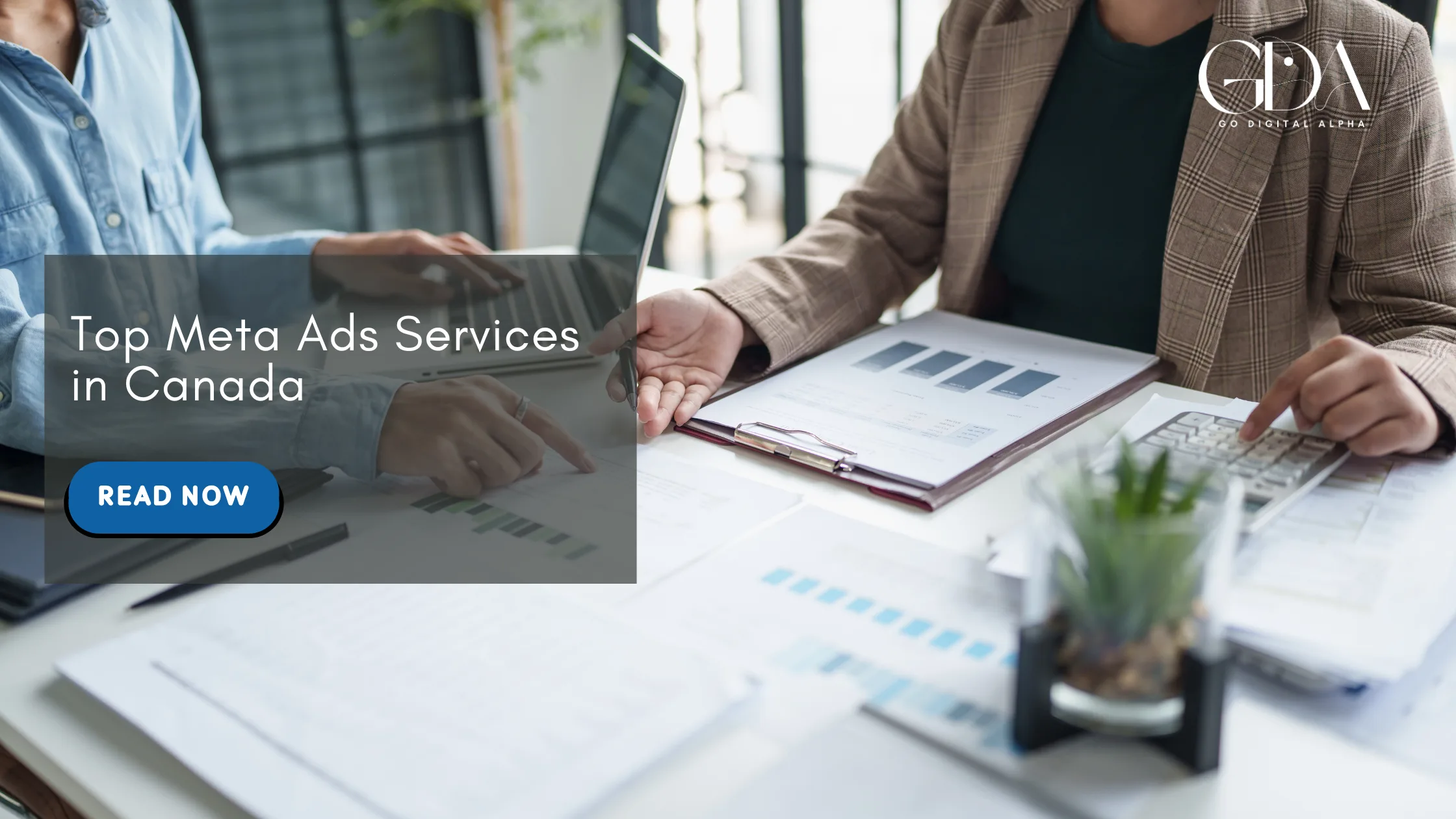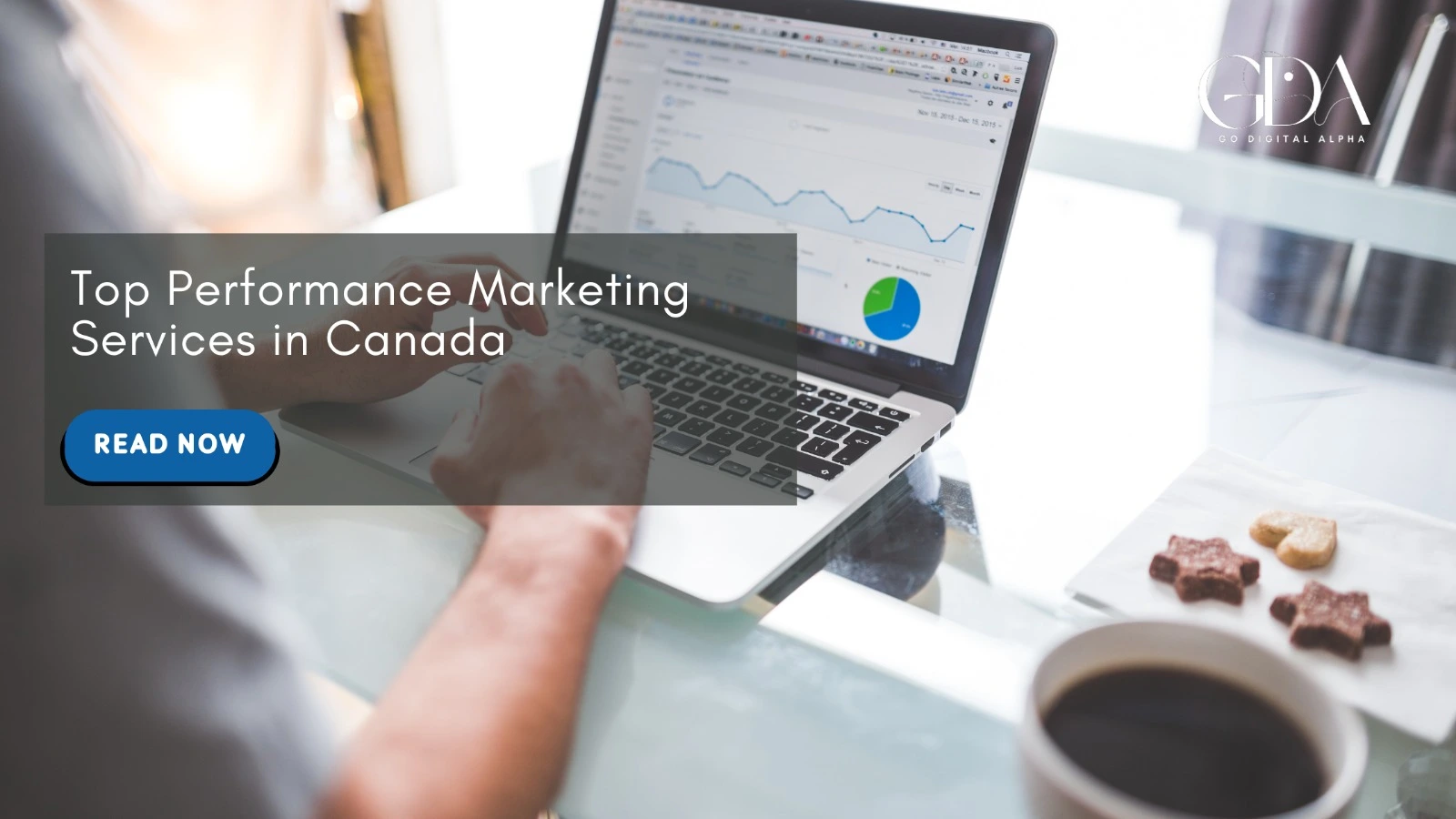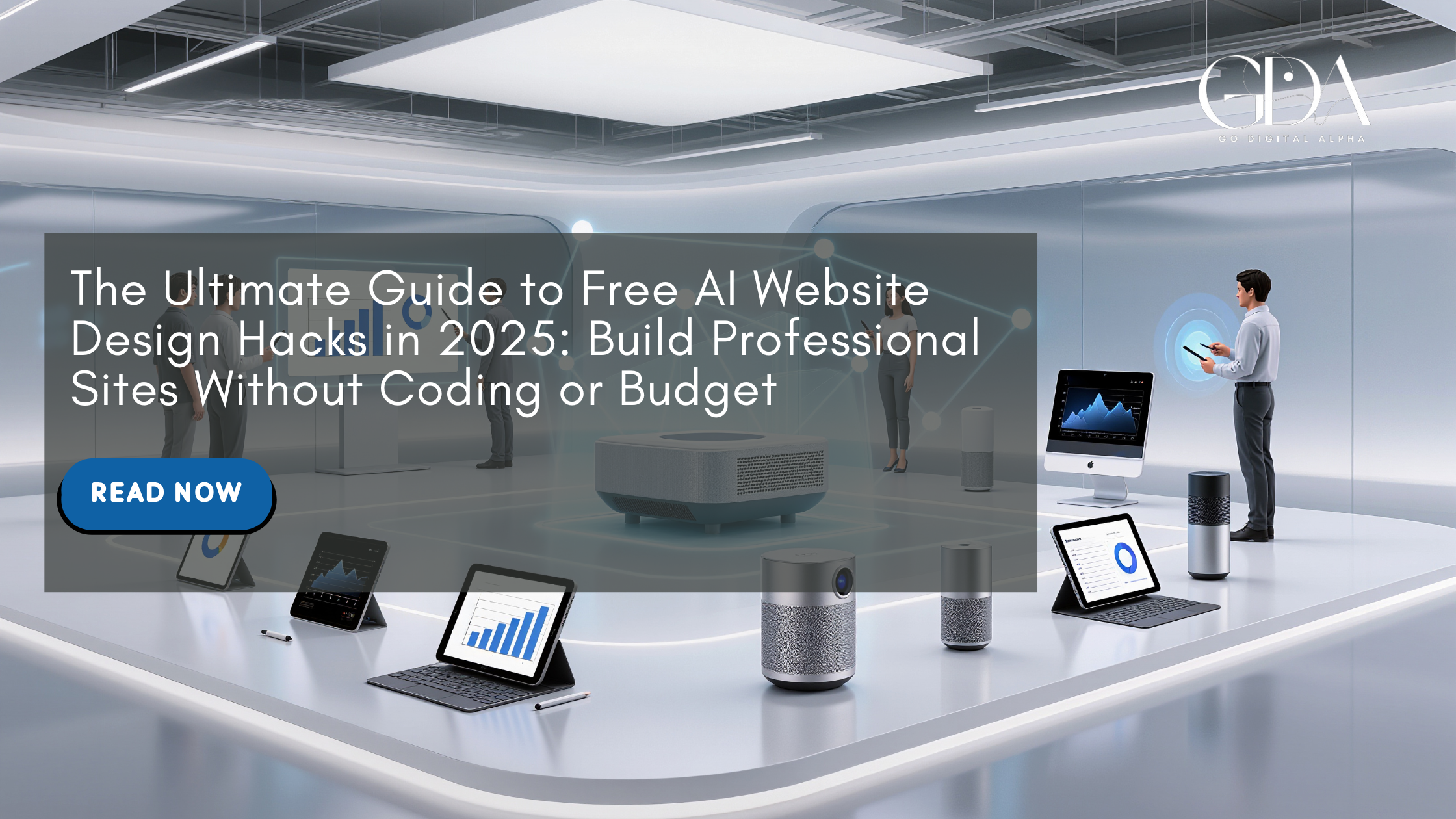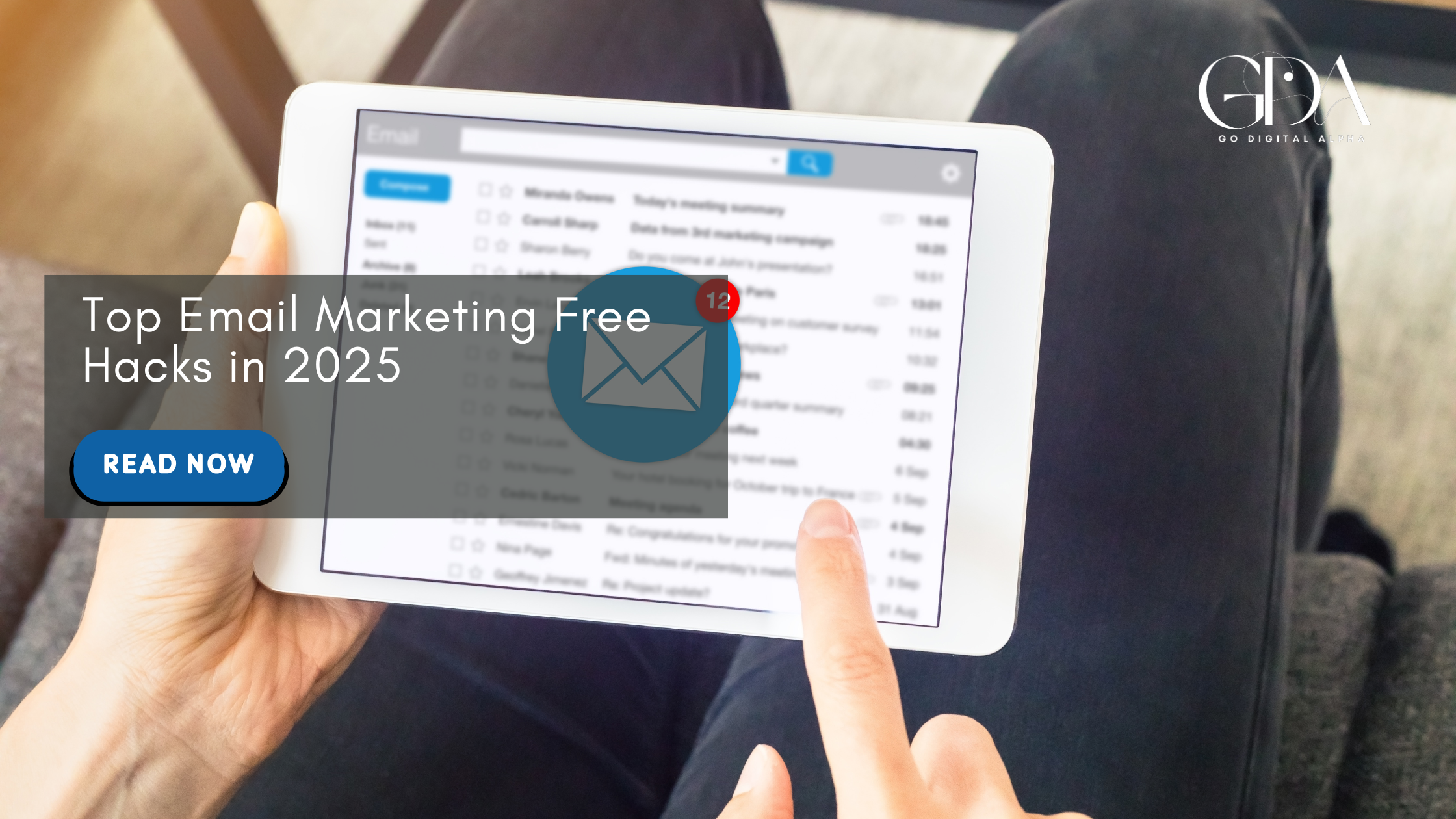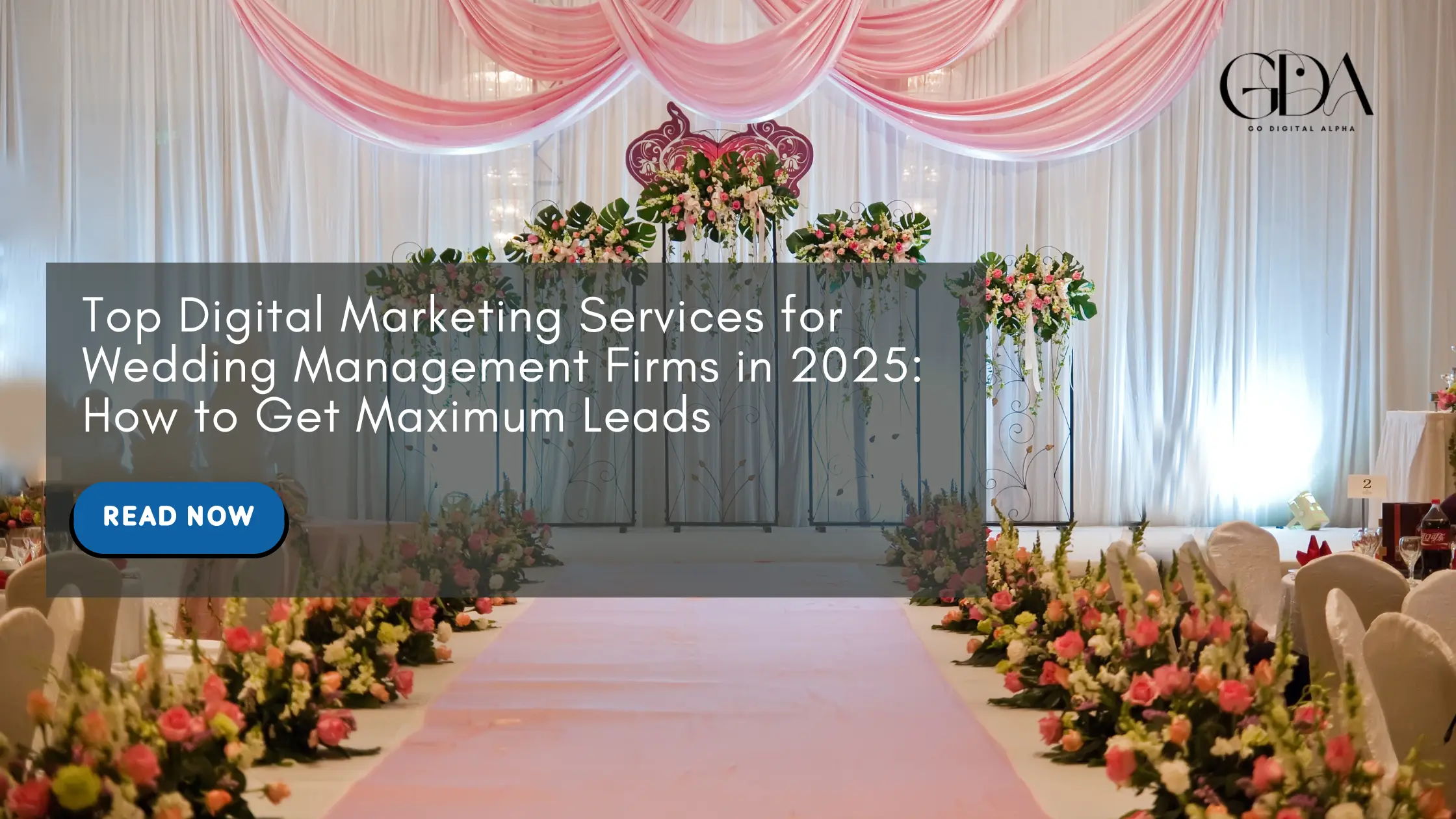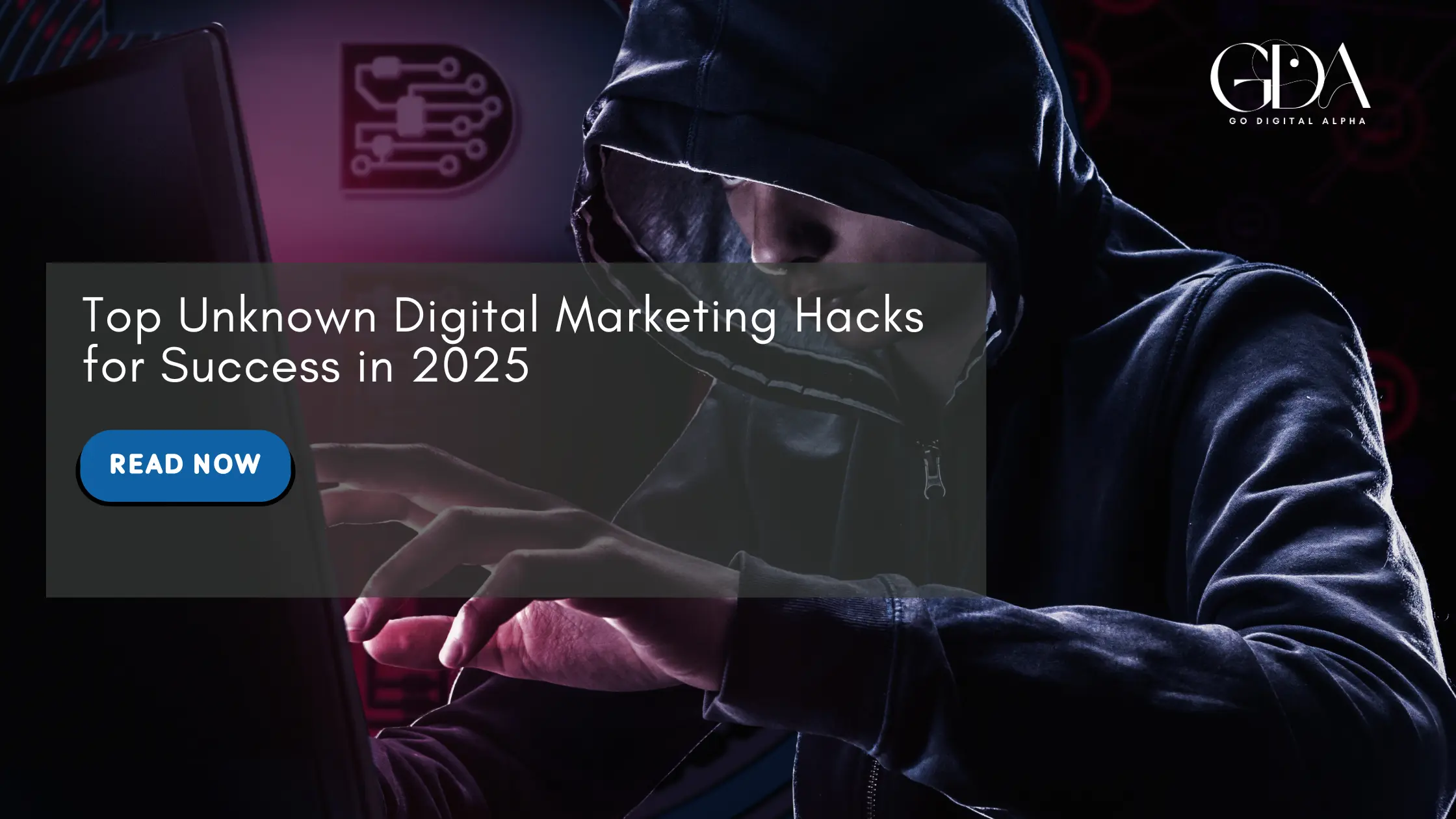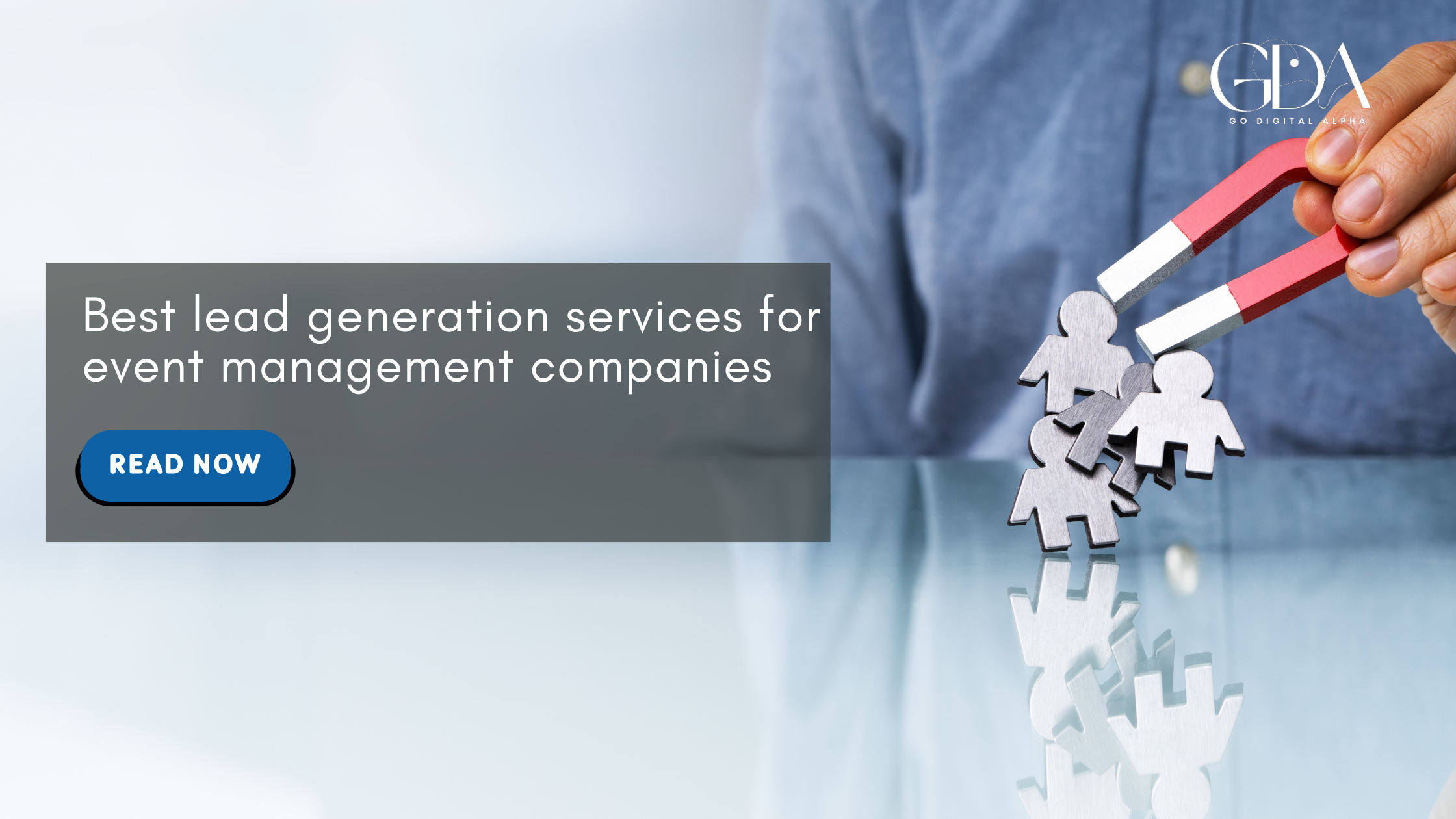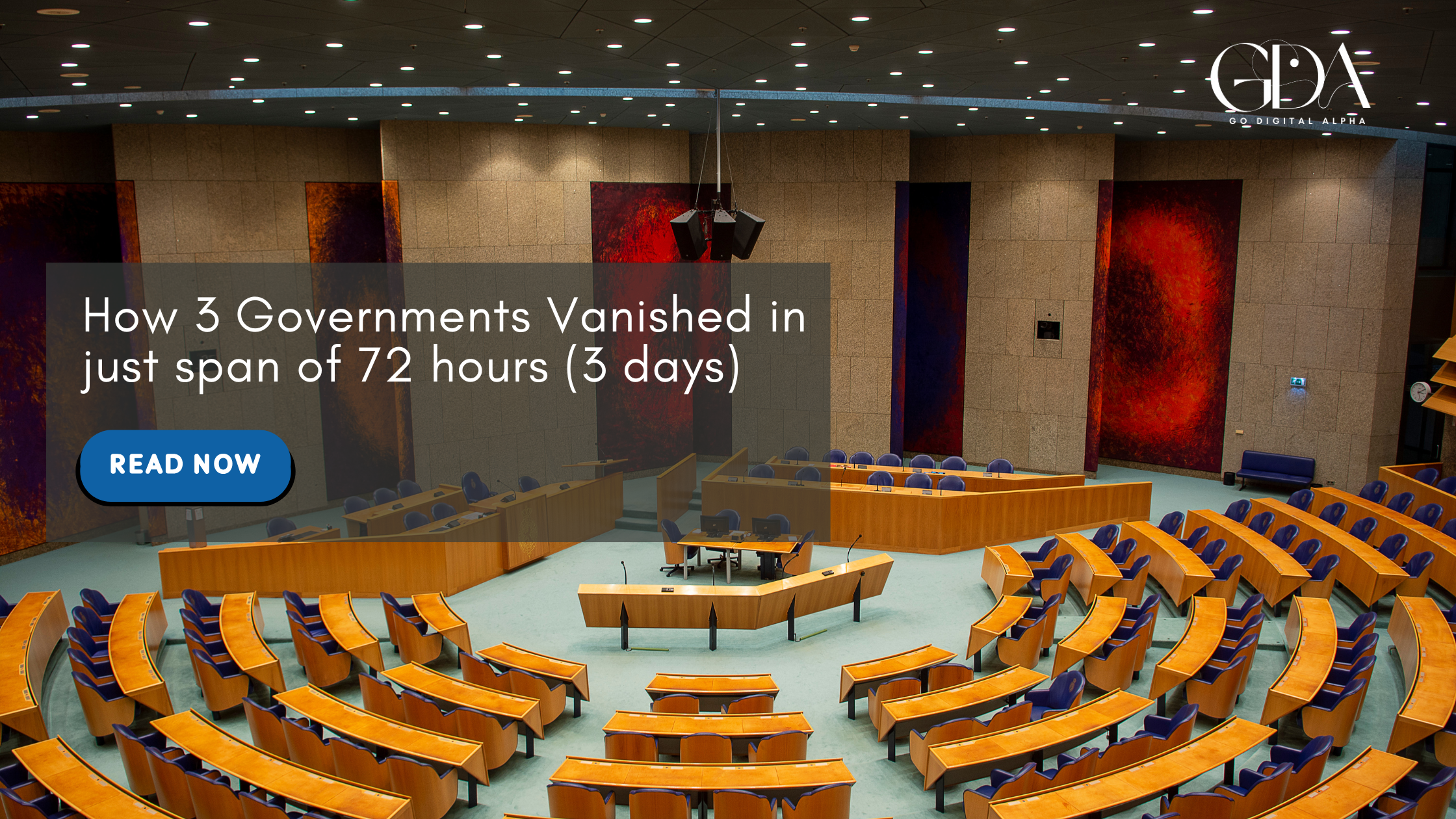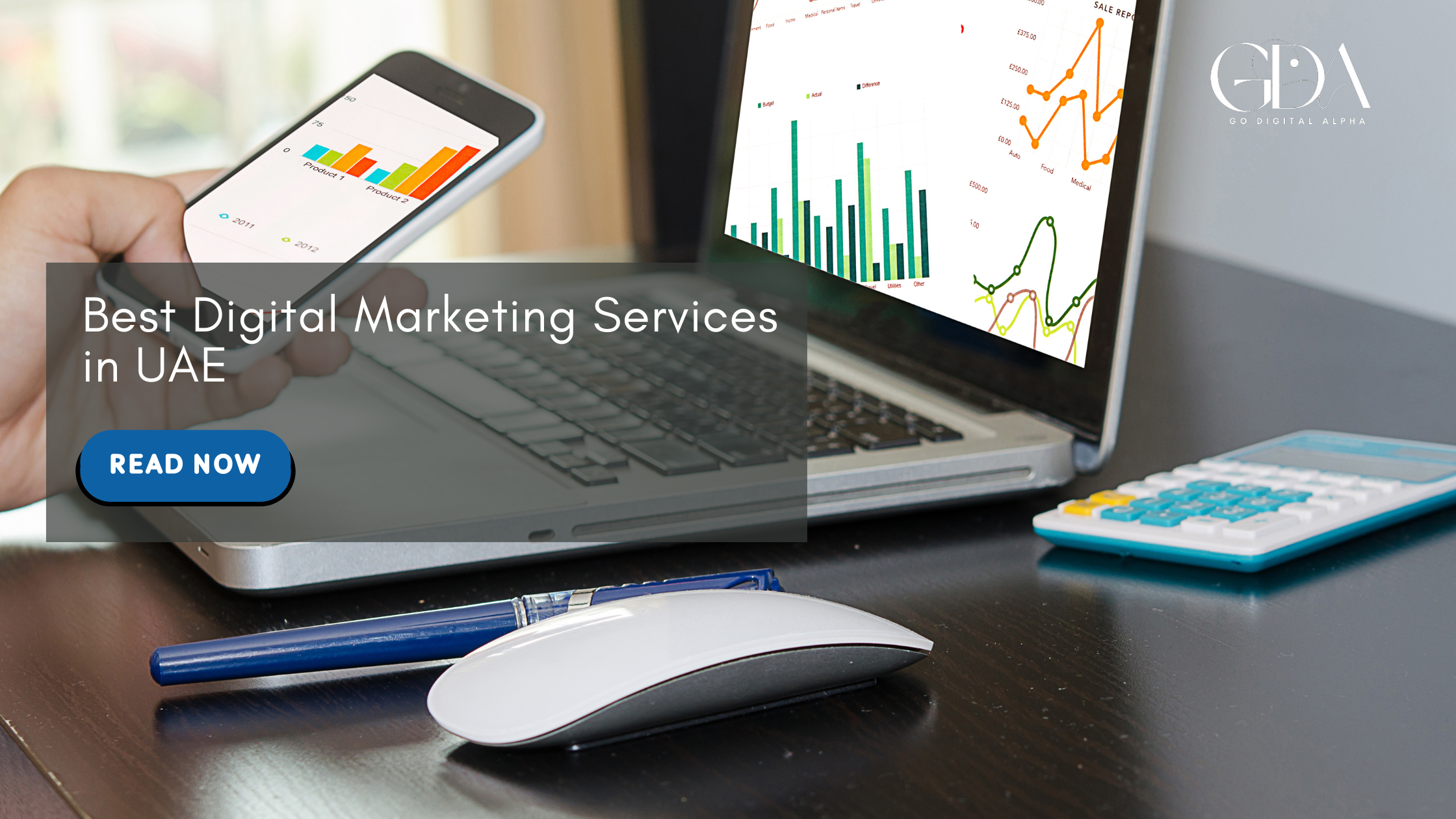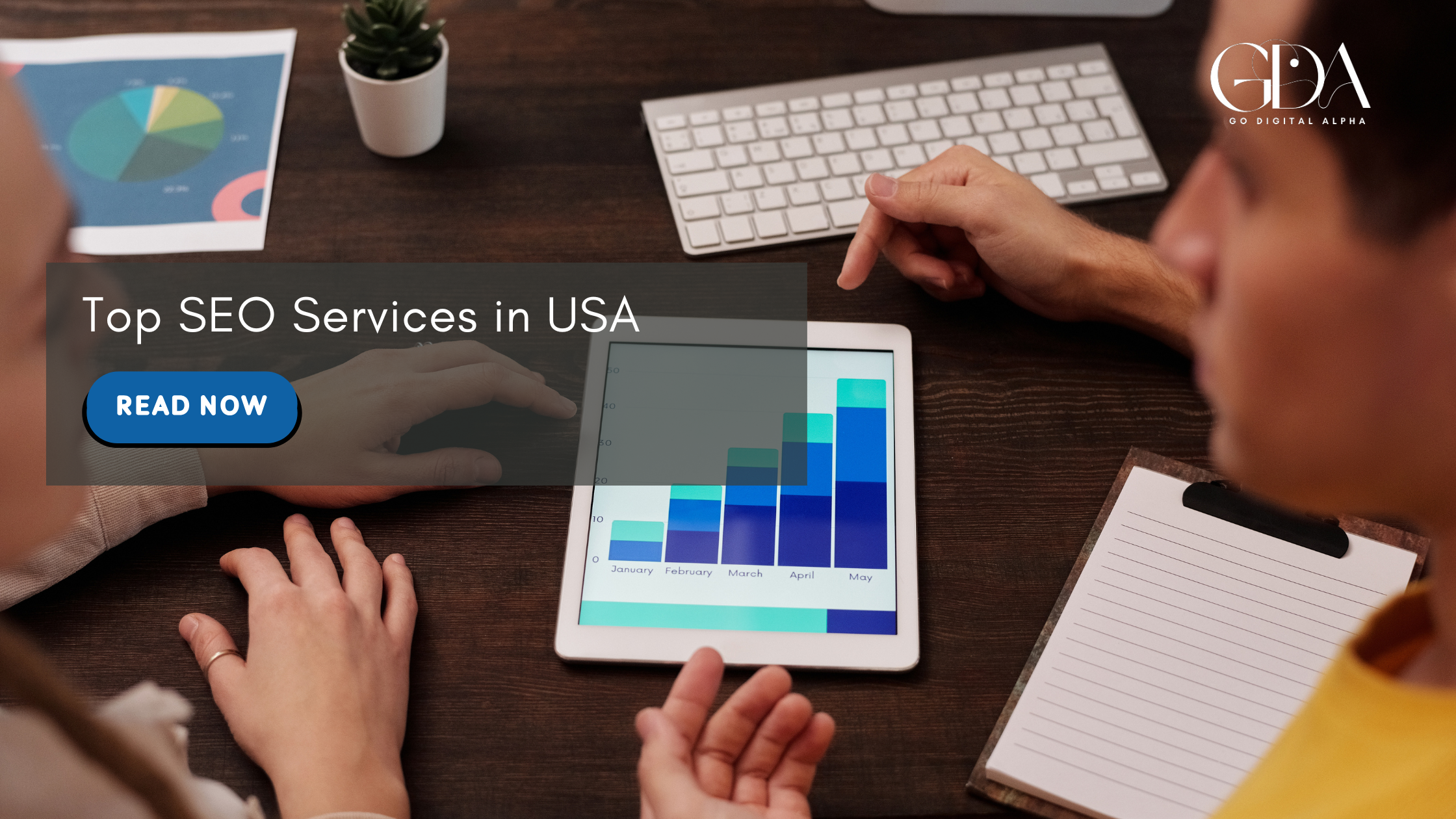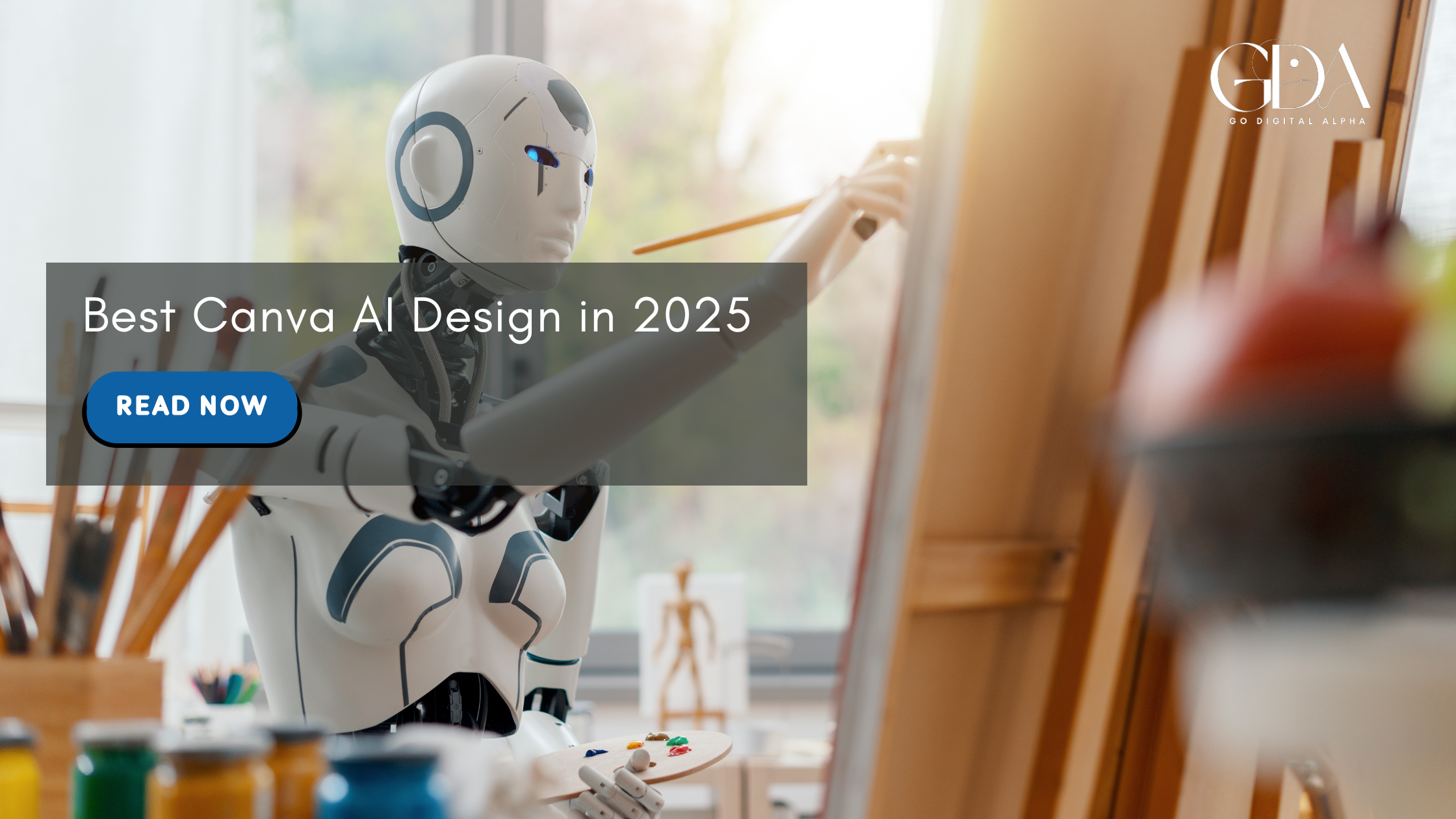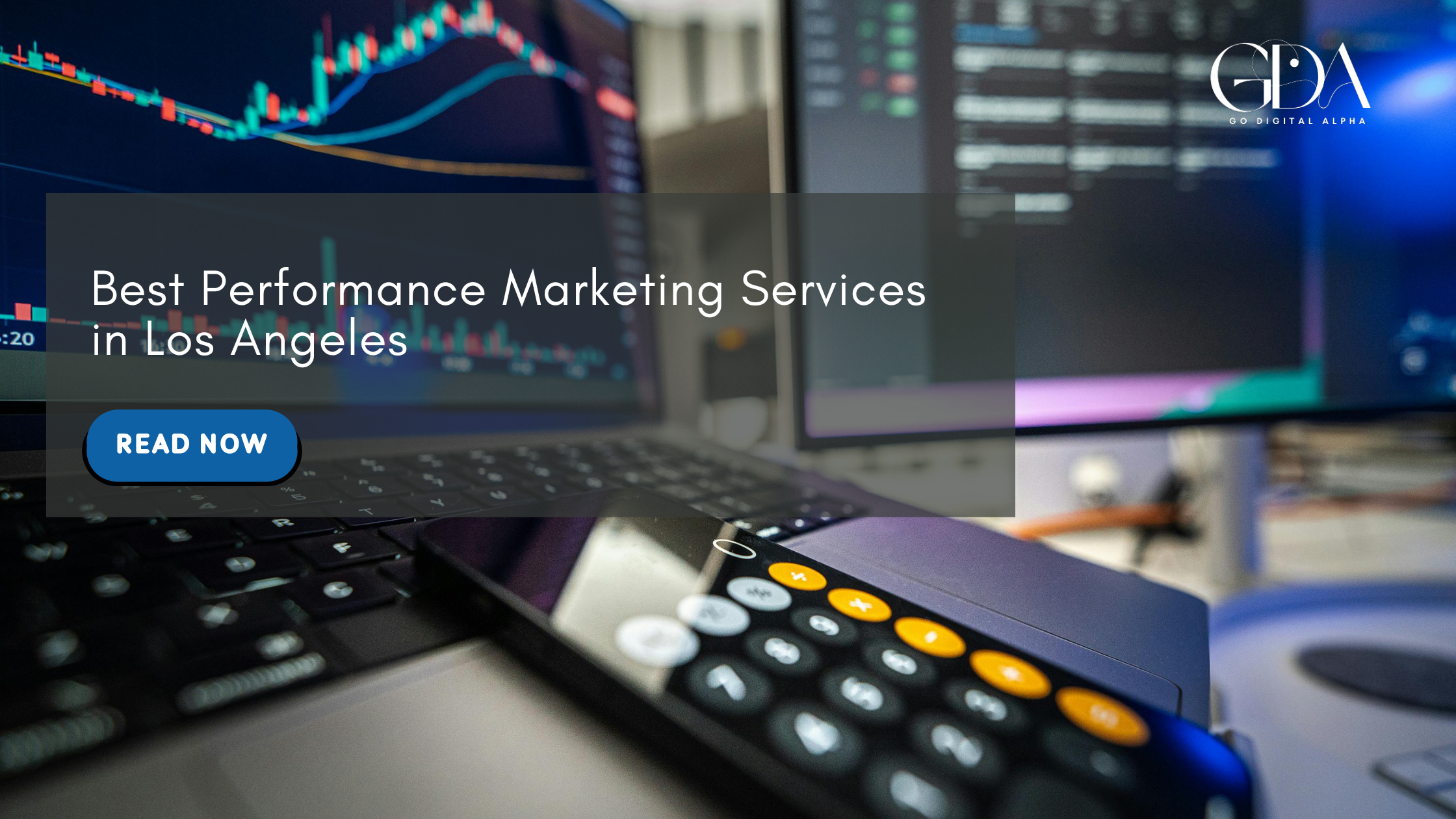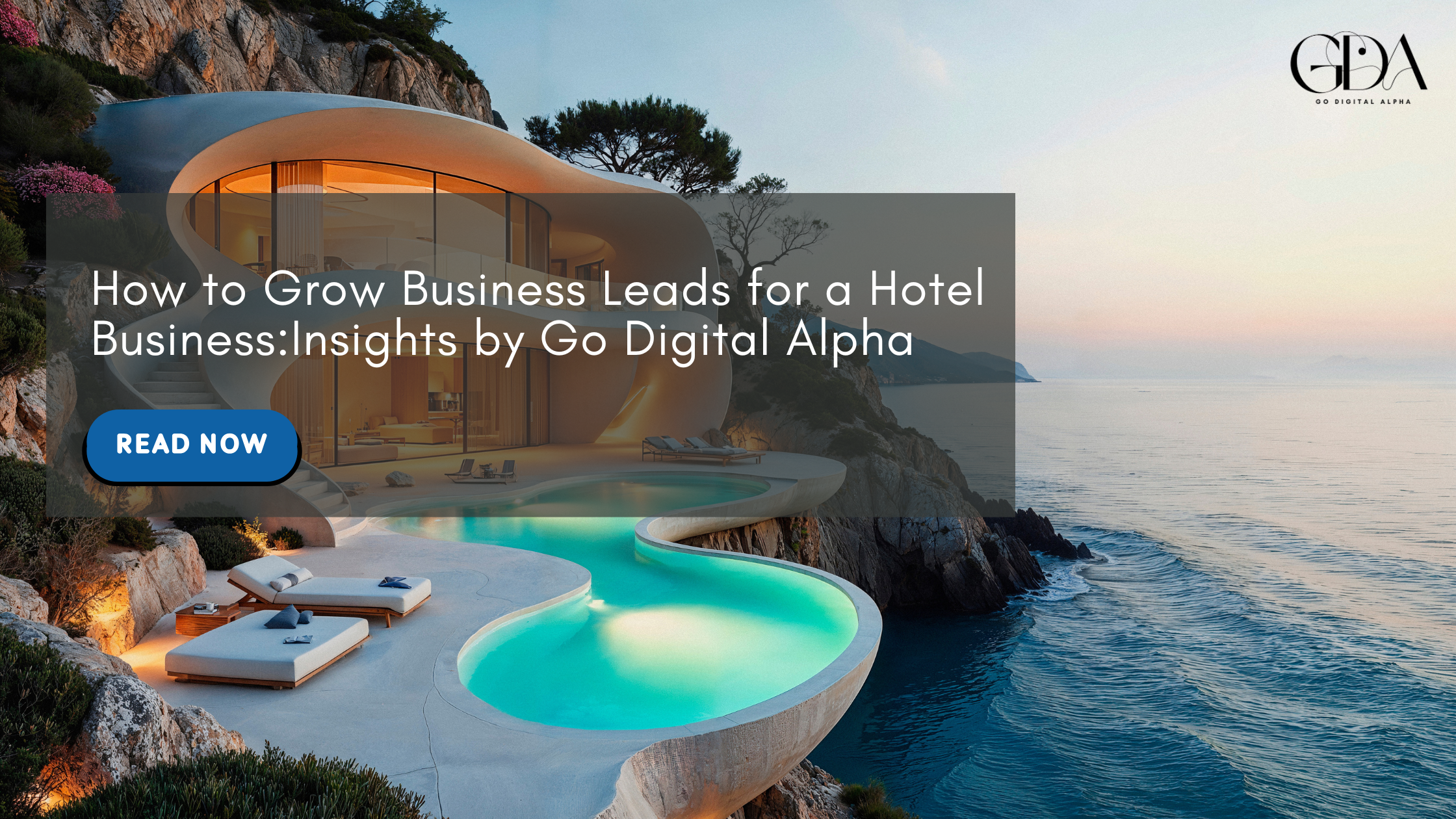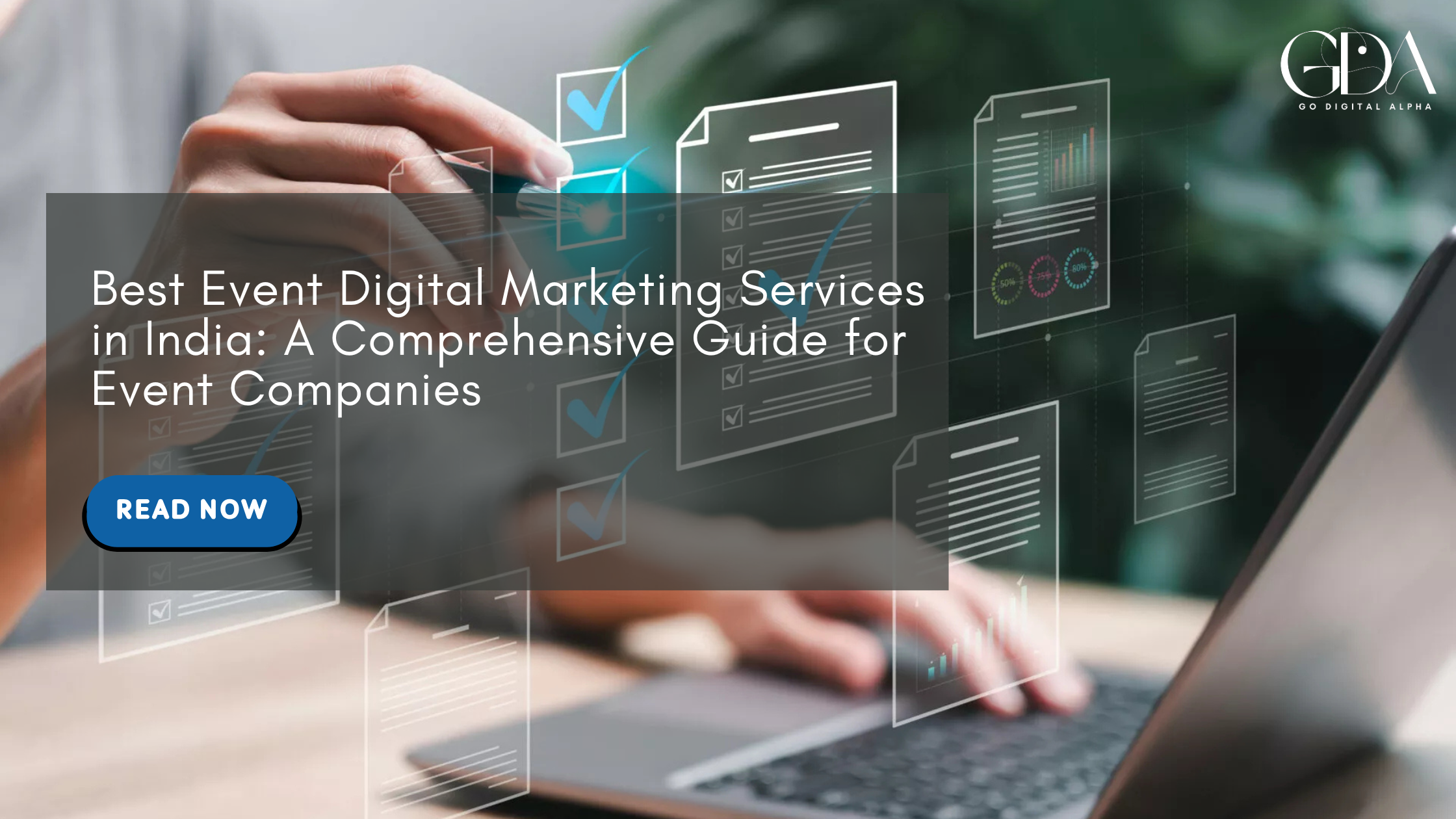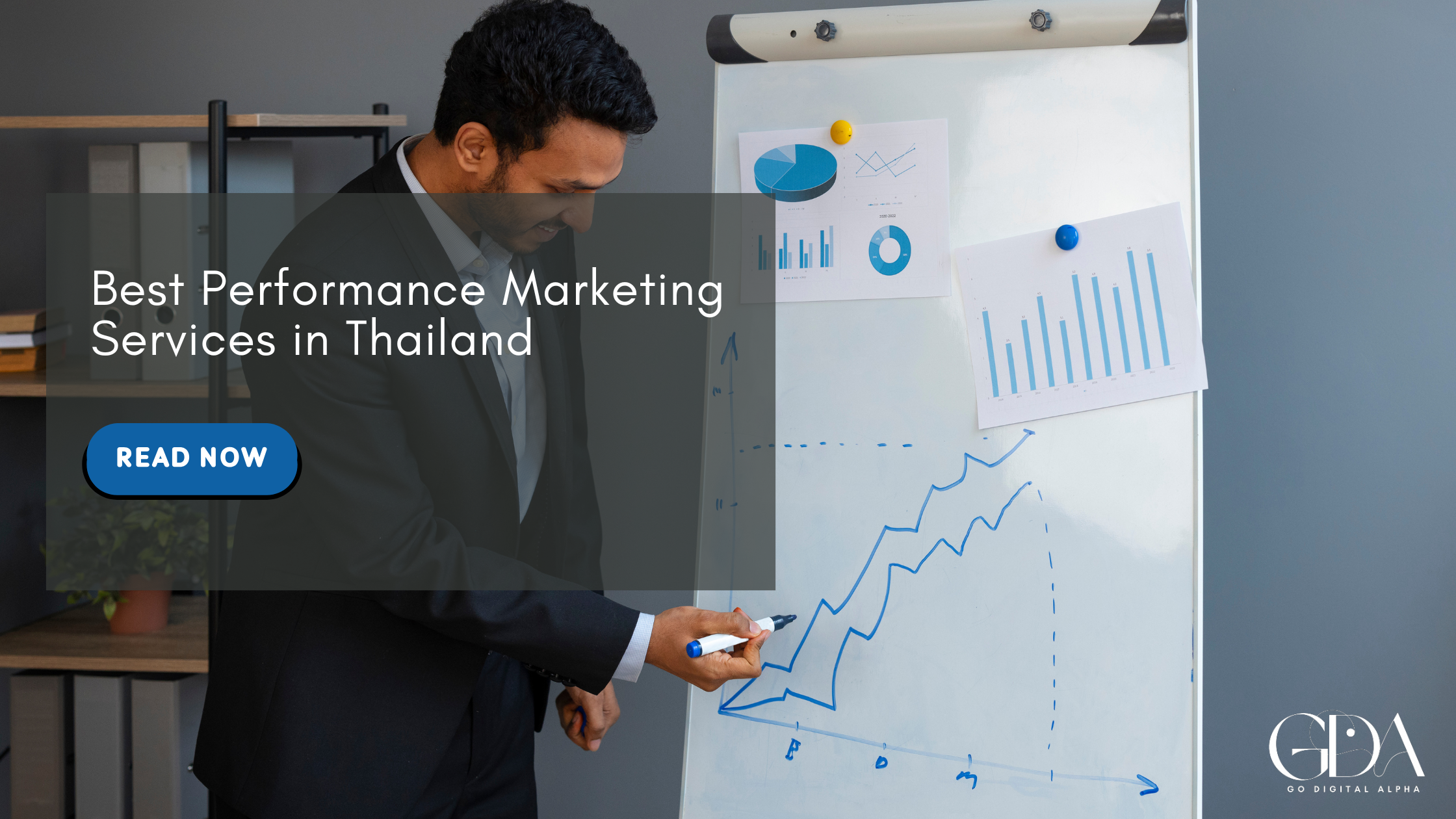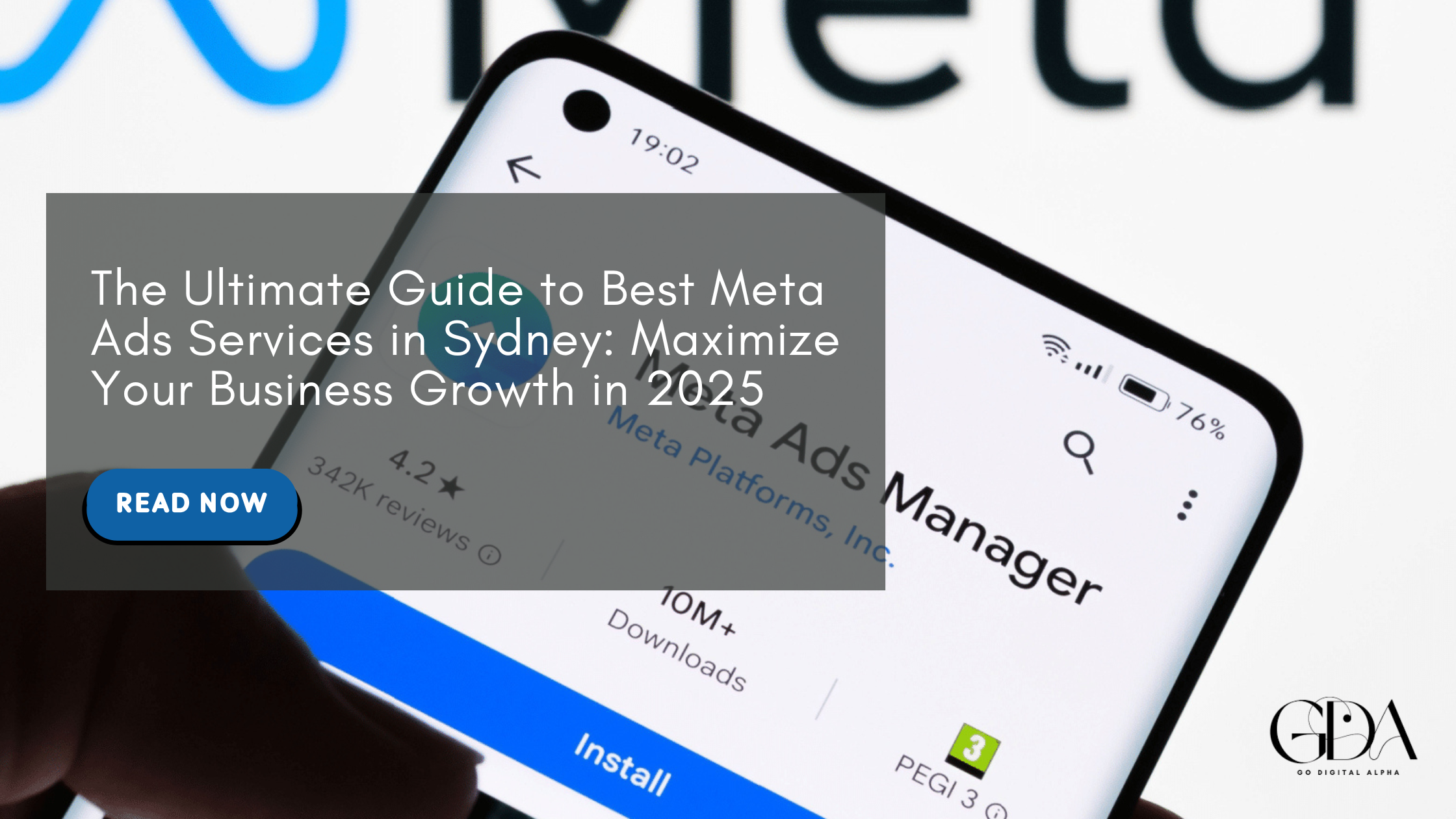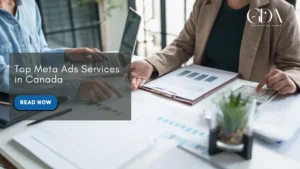Discover how a powerful Paid Media Strategy can boost brand visibility, drive targeted traffic, and maximize ROI across digital channels. Learn the best tactics, tools, and insights to optimize your ad spend and achieve measurable marketing success.
Paid Media Strategy: What’s Working in Google, Meta, LinkedIn, and TikTok in 2025
- Homepage
- Insights
- Paid Media Strategy: What's Working in Google, Meta, LinkedIn, and TikTok in 2025
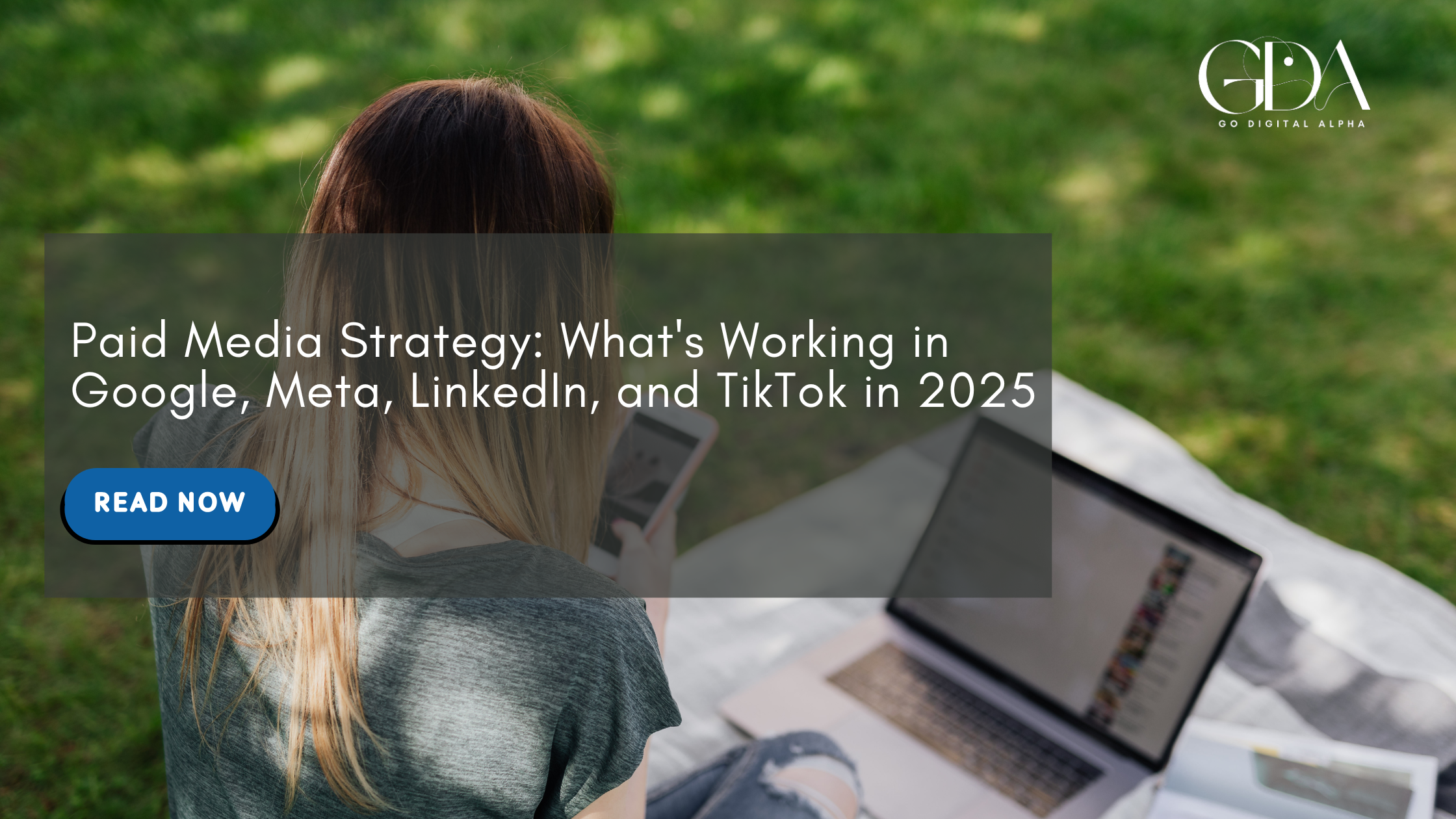
The paid media strategy landscape has undergone a dramatic transformation in 2025. What worked last year may not work today. With artificial intelligence reshaping bidding strategies, algorithm changes affecting reach, and privacy regulations reshaping data collection, marketers must stay ahead of evolving trends to maintain ROI and competitive advantage.
Whether you’re running campaigns for e-commerce, B2B services, SaaS, or agencies, the platforms you choose and the strategies you employ will directly impact your bottom line. In 2025, success isn’t about spreading your budget thin across every platform. It’s about strategic allocation, intelligent automation, and data-driven decision-making.
This comprehensive guide breaks down what’s actually working right now across the four biggest paid advertising platforms—Google Ads, Meta (Facebook and Instagram), LinkedIn, and TikTok—with actionable strategies, real performance benchmarks, and optimization tactics you can implement immediately.
Key Takeaways
- The Current Paid Media Landscape in 2025
- Google Ads: Capturing High-Intent Traffic in 2025
- Performance Max: Hands-Off Scaling
- Meta Ads: Building Awareness and Driving Retargeting at Scale
- Meta Ads Trends Dominating in 2025
- The Meta Conversion Funnel Strategy
- LinkedIn Ads: Dominating B2B Lead Generation
- TikTok Ads: The Fastest-Growing Channel for Younger Demographics
- Cross-Platform Budget Allocation and Strategy
- Critical Success Factors Across All Platforms
- Conclusion: The Future of Paid Media
- Paid Media Strategy FAQs: 20 Questions Answered
The Current Paid Media Landscape in 2025

Before diving into platform-specific strategies, it’s important to understand the macro trends reshaping the industry:
AI and Automation are Now Non-Negotiable. Machine learning algorithms power everything from bid management to creative optimization. Google’s Performance Max, Meta’s Advantage+, and automated bidding strategies like Target ROAS are now table stakes. The question isn’t whether to use automation—it’s how to guide it strategically.
First-Party Data is King. With third-party cookies disappearing and privacy regulations tightening, brands must prioritize first-party data collection. This means building customer emails lists, leveraging CRM integrations, and using customer match audiences to fuel campaigns.
Video Content Dominates. Short-form video has become the most engaging format across all platforms. Whether it’s TikTok, Instagram Reels, YouTube Shorts, or Facebook feed videos, platforms reward video content with superior organic reach and algorithmic favor.
Budget Allocation Has Changed. The traditional approach of equal spending across platforms is dead. The 40-35-25 rule is now the benchmark: 40% to Google Ads (high-intent traffic), 35% to Meta (awareness and retargeting), and 25% to emerging channels like TikTok, LinkedIn, and YouTube.
Privacy-First Marketing Wins. Transparent data collection, GDPR and CCPA compliance, and honest communication about how you use customer data builds trust—and trust drives conversions.
Google Ads: Capturing High-Intent Traffic in 2025

Google Ads remains the most expensive but highest-converting platform for businesses with budget. In 2025, success comes from embracing automation while maintaining strategic oversight.
Why Google Ads Still Dominates
Google ads capture users at the moment of purchase intent. Someone searching “best CRM for small business” is further down the funnel than someone scrolling Instagram. This intent gap justifies Google’s premium pricing.
2025 Benchmarks:
- Average CPC (Cost Per Click): $0.73 across all industries
- Average CPM (Cost Per Thousand Impressions): $11.12
- Average CTR (Click-Through Rate): 1.53%
- Average Google Ads conversion rate: 3-5% for well-optimized campaigns
However, these averages mask significant industry variation. Healthcare advertisers pay $36.82 CPM and $1.52 CPC. Software companies pay $383.24 CPM and $3.88 CPC due to high competition. E commerce marketplaces enjoy $2.71 CPM and just $0.14 CPC, thanks to strong conversion signals.
What’s Working: AI-Powered Bidding Strategies
Google has shifted the platform toward AI automation. The data shows:
- Maximize Conversions and Target ROAS each capture 33% of advertiser spend • Maximize Conversion Value accounts for 15% of spend
- Manual CPC bidding is nearly extinct among sophisticated advertisers
The reason? AI outperforms human bid management at scale. Google’s algorithms analyze thousands of signals—user device, time of day, location, audience demographics, and historical conversion patterns—to adjust bids in real-time. When your conversion tracking is accurate, smart bidding strategies consistently deliver 15-25% better ROI than manual management.
Best Practice: Start with Maximize Conversions if you have at least 20-30 conversions per month. Once you hit 100+ conversions monthly, switch to Target ROAS and set a realistic 3:1 to 4:1 return goal based on your profit margins.
Performance Max: Hands-Off Scaling

Performance Max (PMax) campaigns have become the default for scale-focused advertisers. These campaigns run your ads across Google’s entire network—Search, Display, YouTube, Gmail, and Maps—simultaneously. You don’t manage keywords; instead, you provide assets and audience signals.
In 2025, PMax is especially powerful for:
- E-commerce retailers who can feed product feeds directly into campaigns • B2B SaaS companies targeting multiple decision-makers
- Local service businesses tapping into the pay-per-lead model
Pro Tip: Build a strong asset library with at least 20-30 variations of headlines, descriptions, images, and videos. Google’s AI learns which combinations perform best with different audiences. The more assets you provide, the smarter the algorithm becomes.
Audience Segmentation and First-Party Data
The decline of third-party cookies has forced Google to evolve its targeting capabilities. Here’s what works now:
Customer Match: Upload your email list, phone numbers, or CRM data directly into Google. The platform matches this against logged-in Google accounts and targets those users with high precision. This is ideal for:
- Re-engaging past customers
- Building lookalike audiences of high-value customers
- Running win-back campaigns with exclusive offers
Predictive Audiences: Google’s AI identifies users most likely to convert—even if they don’t match your historical customer profile. This is powerful for scaling campaigns beyond your existing data.
Broad Targeting with Audience Signals: Instead of narrow keyword and demographic targeting, modern Google Ads campaigns use broad keyword matches paired with audience signals (in-market, affinity, and customer match audiences). This lets Google’s algorithm find the high-intent users you’d miss with manual targeting.
Meta Ads: Building Awareness and Driving Retargeting at Scale

Meta (Facebook and Instagram) has evolved from a broad awareness platform to a sophisticated conversion machine when used correctly. In 2025, Meta’s edge comes from unmatched audience insights and the rise of AI-powered Advantage+ campaigns.
Why Meta Still Dominates for Direct Response
Meta reaches 3+ billion people monthly. The platform’s targeting capabilities rival Google’s, but work fundamentally differently. While Google captures intent, Meta builds awareness and captures users across multiple touchpoints.
2025 Benchmarks:
- Average CPC: $0.50-$2.00 depending on industry
- Average CPM: $5-$15
- Average CTR: 0.5-2%
- Average conversion rate: 1-3% (lower than Google, but at massive scale)
Meta Ads Trends Dominating in 2025

Short-Form Video is Non-Negotiable
Reels (Instagram’s short-form video feature) now drives 4x more engagement than traditional feed posts. Facebook is aggressively prioritizing video in the algorithm. TikTok-style, native-feeling content dramatically outperforms polished, branded content.
What works:
- Videos under 15 seconds with attention-grabbing hooks in the first 3 seconds • Authentic, user-generated content style (UGC)
- Trending sounds and music
- Clear, on-screen text
- Direct calls-to-action
Advantage+ Campaigns
Meta’s AI-powered Advantage+ Shopping campaigns automatically optimize: • Audience targeting (broad audiences work better than narrow segments) • Bid strategies
- Creative variations
- Placements across Meta properties
When you provide strong creative assets and clear conversion goals, Advantage+ typically delivers 20-30% better ROAS than manually managed campaigns. Marketers using Advantage+ report lower CPAs and higher conversion volumes.
User-Generated Content (UGC) Outperforms Brand Content
Ads featuring real customers, authentic testimonials, or unpolished product demos consistently outperform sleek, professional advertising. This is because UGC appears more trustworthy and relatable.
Strategy: Partner with micro-influencers and customers to create authentic content. Run this content in ads without heavy branding. The authenticity drives engagement and conversions.
Broad Targeting Plus Audience Signals
Similar to Google’s shift, Meta is moving away from narrow demographic targeting. Instead, use broad targeting paired with audience signals:
- Lookalike audiences of converters
- Engagement audiences (people who’ve engaged with your content)
- Interest-based audiences to “seed” the algorithm
- Custom audiences from your email list
Meta’s algorithm then finds the highest-intent users within these broad segments. This approach delivers superior results to manual narrow targeting.
The Meta Conversion Funnel Strategy
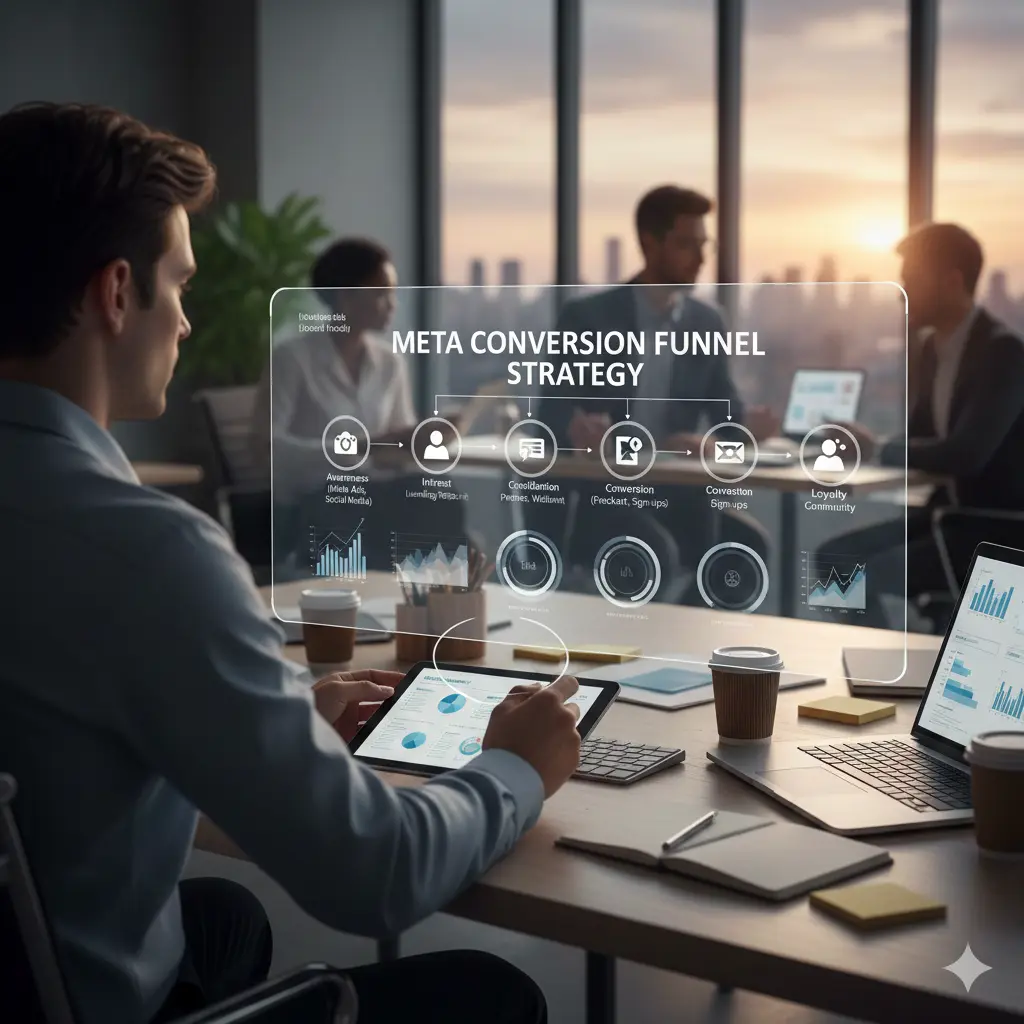
Successful Meta campaigns align with the customer journey:
Top of Funnel (TOFU):
Awareness campaigns with broad targeting, video content, and messaging focused on the problem your product solves. Objective: Reach.
Middle of Funnel (MOFU):
Retargeting campaigns targeting website visitors, video viewers, and engaged users. Use Carousel ads and testimonials to build consideration. Objective: Engagement and clicks.
Bottom of Funnel (BOFU):
Conversion campaigns with dynamic product ads, limited-time offers, and urgency messaging. Target warm audiences: past website visitors, email subscribers, and lookalike audiences. Objective: Conversions.
Budget Allocation Across Meta
For a $5,000/month Meta budget, allocate:
- 40% to top-of-funnel awareness campaigns
- 35% to middle-funnel retargeting and consideration
- 25% to bottom-funnel conversion campaigns
Adjust this based on performance. If BOFU campaigns consistently outperform, shift more budget there. If TOFU audiences aren’t converting downstream, reduce spend.
LinkedIn Ads: Dominating B2B Lead Generation

LinkedIn is the only major platform optimized specifically for B2B. If your target customer is a decision-maker at a company, LinkedIn offers unmatched precision and audience quality.
Why LinkedIn Commands Premium Pricing
LinkedIn’s audience is fundamentally different. Users are in “professional mode.” They’re actively evaluating solutions and are in positions to influence purchasing decisions.
2025 Benchmarks:
- Average CPC: $5-$10 (2-3x higher than Meta)
- Average CPM: $10-$50 depending on targeting specificity
- Average CTR: 0.4-0.8%
- Average conversion rate: 2-5% (higher quality leads)
While LinkedIn is more expensive, the lead quality is substantially higher. A $20 cost-per-lead on LinkedIn often outperforms a $5 cost-per-lead from Facebook because the LinkedIn leads are actually qualified decision-makers.
LinkedIn Ads Strategies Winning in 2025
Account-Based Marketing (ABM)
If you sell to enterprise accounts, LinkedIn’s Account-Based Marketing capabilities are unmatched. You can:
- Upload a list of target companies
- Target employees at those companies
- Create personalized creative and messaging for each company
ABM on LinkedIn converts at 2-4x higher rates than broad targeting because the messaging is hyper relevant.
Sponsored Content and InMail Campaigns
- Sponsored Content: Your content appears in the LinkedIn feed. Best for awareness and engagement. Cost: $5-10 CPC.
- Sponsored InMail: Messages appear directly in users’ inboxes. Feels like a personal message rather than an ad. Best for high-value offers. Cost: $3-8 per message sent.
InMail campaigns often deliver 3-5x higher conversion rates than sponsored content because the inbox is less crowded and messages feel more personal.
Professional Audience Targeting
LinkedIn lets you target with precision that other platforms can’t match:
- By job title (CMO, VP Sales, CFO, etc.)
- By company size
- By industry
- By seniority level
- By skills and endorsements
- By schools and universities attended
Pro Tip: Instead of broad targeting, use specific combinations. Target “Marketing Directors” at “B2B SaaS companies” with “1,000-5,000 employees” generates dramatically better leads than simply targeting “marketing professionals.”
The LinkedIn Lead Generation Funnel
TOFU: Thought leadership content—articles, posts, and video content establishing your expertise. Objective: Build authority and audience.
MOFU: Engagement and Lead Gen Form campaigns. Create content addressing specific pain points. Use LinkedIn’s native lead gen forms to capture email addresses. Objective: Build a warm audience of interested prospects.
BOFU: Sponsored InMail and direct offers to engaged users. Now that prospects know you, deliver your sales pitch. Objective: Conversions and pipeline.
LinkedIn Budget Allocation
For a $3,000/month LinkedIn budget:
- 30% to TOFU thought leadership content
- 40% to MOFU lead generation campaigns
- 30% to BOFU direct response campaigns
This balance builds authority while actively generating leads and conversions.
TikTok Ads: The Fastest-Growing Channel for Younger Demographics

TikTok has exploded as an advertising platform. The audience is younger (Gen Z and Millennials), but the platform’s reach and algorithmic power are unmatched. In 2025, TikTok is becoming essential for brands targeting audiences under 40.
Why TikTok is Different
TikTok’s algorithm is the most sophisticated on the internet. The For You Page (FYP) shows each user a feed perfectly personalized to their interests. This means even a brand-new account can reach millions of highly-engaged users quickly—if the content resonates.
2025 Benchmarks:
- Average CPC: $0.20-$1.00 (lowest of major platforms)
- Average CPM: $2-$10
- Average CTR: 2-5%
- Average conversion rate: 1-3%
TikTok’s advantage is scale and cost-efficiency, not necessarily conversion rate. Acquiring customers is 10x cheaper than Google Ads, but lower-funnel performance requires testing and optimization.
TikTok Ads Formats That Win
In-Feed Ads
These appear in users’ FYP like organic content. Best practice: Make them look like organic content, not advertisements. TikTok users have strong “ad-blindness” if content feels too polished or sales-y.
Format requirements:
- 9:16 vertical video
- 15-60 seconds (optimal: 21-34 seconds)
- Trending audio and music
- Authentic, unpolished style
- Clear CTA
TopView Ads
These are premium placements at the top of the FYP when users first open the app. Best for brand awareness. Cost is 5-10x higher than in-feed ads.
Spark Ads
Amplify existing organic TikTok videos through paid promotion. If an organic video is performing well, turn it into an ad. These have superior engagement because they’re genuinely organic content.
Content That Converts on TikTok
Unlike other platforms, TikTok rewards:
- Trends and Challenges: Participate in trending sounds, hashtags, and dances • Education and Value: Quick tips, how-tos, and hacks resonate strongly
- Humor: Funny, relatable content spreads faster
- Authenticity: Behind-the-scenes, unfiltered content
- Trending Products: Unboxings, product reviews, and trend-jacking
- Influencer Partnerships: Creator-led content outperforms brand content
Pro Strategy: Create 10-20 pieces of organic content on TikTok first. Don’t run paid ads immediately. Let the algorithm show you what resonates. Once you have 3-5 videos with strong organic engagement, convert them to Spark Ads. These vastly outperform non-organic videos.
Retargeting on TikTok
TikTok’s retargeting is growing but not as sophisticated as Meta or Google. However, you can retarget:
- Website visitors (pixel-based)
- Users who’ve interacted with your TikTok account
- Users who’ve watched your videos completely
TikTok retargeting works best when combined with an irresistible offer (discount code, scarcity, limited-time deal) because cold retargeting doesn’t perform as well as on other platforms.
Cross-Platform Budget Allocation and Strategy

For most businesses, the optimal budget allocation follows the 40-35-25 rule:
• 40% Google Ads: Capture high-intent, ready-to-buy traffic
- 35% Meta: Build awareness, retarget, and capture consideration-stage audiences
- 25% LinkedIn (B2B) or TikTok (B2C): LinkedIn for qualified lead generation; TikTok for brand awareness and reach among younger demographics
However, optimal allocation depends on your business model:
E-commerce brands:
50% Google (shopping ads), 35% Meta (product retargeting), 15% TikTok (awareness).
B2B SaaS:
40% LinkedIn Ads, 35% Google Ads, 25% split between Meta and YouTube for webinar promotion.
Direct-to-consumer brands:
20% Google, 50% Meta, 30% TikTok (for awareness and viral potential). Local service businesses: 60% Google Local Service Ads, 30% Meta, 10% experimentation.
The 70-20-10 budget rule is also worth considering: 70% on proven, high-performing channels; 20% on optimization and tests within those channels; 10% on experimental initiatives and new platform exploration.
Critical Success Factors Across All Platforms
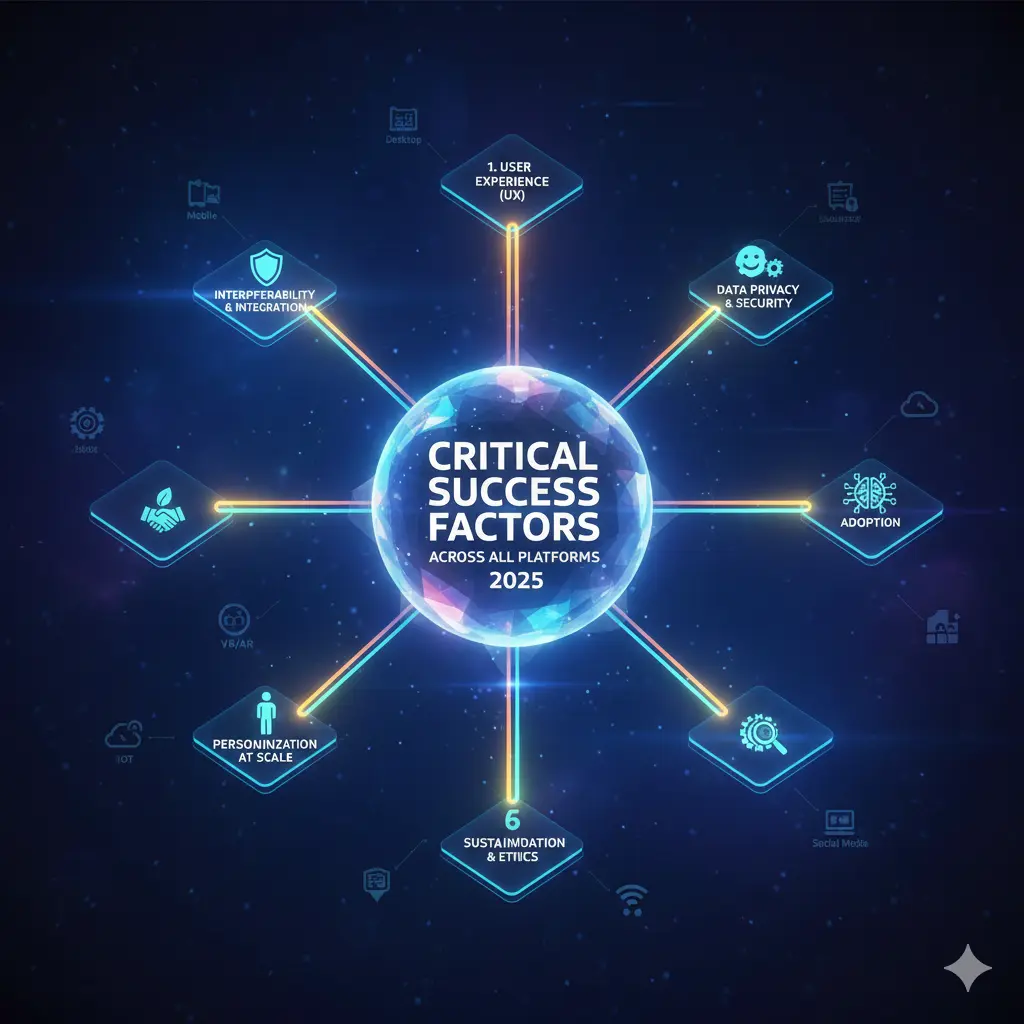
Regardless of which platforms you prioritize, these fundamentals drive success across Google, Meta, LinkedIn, and TikTok:
First-Party Data Is Your Competitive Advantage
With third-party cookies disappearing, brands collecting first-party data win. Strategies: • Build email lists aggressively
- Use lead magnets, quizzes, and content upgrades
- Implement CRM integrations to sync customer data
- Run Customer Match campaigns with your best customers
- Create lookalike audiences from high-value customer segments
Creative Testing Is Non-Negotiable
In 2025, “set it and forget it” campaigns fail. Winners continuously test:
- A/B testing: Test one variable at a time (headline, image, CTA, audience) to isolate what works
- Multivariate testing: Test combinations of elements for advanced optimization • Concept testing: Get audience feedback on creative ideas before full production
- Automated testing: Use platform tools (Meta’s advantage+, Google’s Performance Max) to test variations at scale
Spend 20% of your budget on testing new creatives and audiences. The insights pay dividends.
Attribution Modeling Ensures Smart Decisions
Modern customer journeys span multiple touchpoints. You need proper attribution to understand which ads are actually driving conversions.
Best practices:
- Use platform-native attribution (Google Ads, Meta Ads Manager)
- Implement UTM parameters to track campaign sources in Google Analytics • Use data-driven attribution models (machine learning) when possible
- Build a centralized analytics dashboard showing cross-platform performance.
Conversion Tracking Is Your Foundation
Poor conversion tracking ruins campaigns. Make sure:
- You’re tracking the right conversions (purchases, leads, sign-ups) not just clicks • Tracking code is properly implemented across all platforms
- You’re using platform-specific tools (Google Analytics 4, Meta Conversion API) • You monitor tracking accuracy regularly
Landing Page Optimization Is Equally Important as Ads
A great ad driving traffic to a poorly optimized page wastes budget. Ensure landing pages:
• Load in under 3 seconds
- Match the ad messaging
- Have a single clear CTA
- Are mobile-optimized
- Include social proof and trust signals
- Have minimal form fields
Conclusion: The Future of Paid Media

Paid media in 2025 is defined by intelligent automation paired with strategic human oversight. The winners aren’t necessarily those spending the most—they’re those making smarter allocation decisions, leveraging AI effectively, and building lasting customer relationships through first-party data.
The platforms—Google, Meta, LinkedIn, and TikTok—will continue evolving. New features will emerge. Algorithms will shift. But the fundamentals remain:
- Reach the right audience at the right time with compelling messaging
- Optimize ruthlessly using testing and data
- Build trust through transparent data practices and authentic communication
- Track results obsessively to inform future decisions
The paid media strategies working today are those grounded in these fundamentals, adapted to each platform’s unique strengths, and executed with precision.
Paid Media Strategy FAQs: 20 Questions Answered
The biggest change is the shift from third-party data targeting to first-party data and AI automation. Platforms like Google and Meta are moving away from broad demographic targeting toward AI-
driven audience matching paired with customer data. Additionally, short-form video has become the dominant content format across all platforms, outperforming traditional static ads by 4-10x in engagement metrics.
No. Start with 1-2 platforms where your audience is most active, and become expert there before expanding. The 40-35-25 budget allocation rule is a good framework: 40% Google Ads (if you're targeting high-intent buyers), 35% Meta (awareness and retargeting), 25% TikTok or LinkedIn (depending on your audience). For B2B companies, prioritize Google and LinkedIn. For B2C e commerce, prioritize Meta and Google. For reaching Gen Z, prioritize TikTok.
Google Ads: Minimum $1,000/month for meaningful optimization and data. Below $500/month, you won't have enough conversion data for smart bidding to work effectively.
Meta: Minimum $300-500/month to get meaningful data. Meta's algorithm needs spending to optimize.
LinkedIn: Minimum $500-1,000/month due to higher costs. Below this, you won't generate enough leads for reliable data.
TikTok: Minimum $200-300/month to test. TikTok is cheaper, so smaller budgets can still work.
Performance Max (PMax): AI-driven campaigns running across all Google networks (Search, Display, YouTube, Gmail, Maps). You provide assets and audience signals; Google's algorithm handles optimization. Best for: Scale, simplicity, and when you have strong product feeds. Requires less hands-on management but less transparency into which keywords or placements are driving results.
Traditional Campaigns: You manually manage keywords, targeting, and bidding strategies. Best for: Precise control, testing specific hypotheses, and when you want to understand exactly which keywords drive conversions. Requires more management but provides more insights.
Best practice: Use Performance Max for scaling once you've proven your business model with traditional campaigns.
In 2025, broad targeting paired with audience signals beats narrow targeting. Here's why: Meta's algorithm is so sophisticated that it can find high-intent users within broad audiences. Narrow targeting actually limits the algorithm's ability to explore and find similar high-value users.
Best practice: Start broad (ages 25-55, all genders, all interests interested in your category). Let Meta's algorithm test different segments. After 2-3 weeks, review performance and refine if needed.
Spend 20% of your budget on testing new creatives, audiences, and messaging. For example, if you have a $5,000/month budget, spend $4,000 on proven high-performers and $1,000 on testing. This balance ensures you're not cannibalizing performance while generating insights for future scaling.
Minimum data for reliable testing:
- Google Ads: 30-50 conversions per variation
- Meta: 50-100 conversions per variation
• LinkedIn: 20-30 conversions per variation
Best practice: Test and refresh creative every 2-4 weeks. Ad fatigue is real—as users see the same ad repeatedly, CTR and conversion rates decline.
Warning signs of ad fatigue:
- CTR dropping below your historical average
- Conversion rate declining week over week
- CPM or CPC increasing significantly
When you see these signals, pause underperforming creatives and launch new variations.
- Headline: Clear, benefit-driven, and matching your ad messaging
- Subheading: Addresses a specific pain point or objection
- Hero Image/Video: High-quality visual of your product or solution
- Social Proof: Testimonials, case studies, customer logos, or review ratings 5. Key Benefits: 3-5 bullet points highlighting what users get
- CTA Button: Bold, clear, and repeated at least twice on the page
- Form: Minimal fields (email and name only, if possible)
- Trust Signals: Security badges, money-back guarantee, or privacy statement 9. Page Speed: Load in under 3 seconds
Pro tip: Use tools like Unbounce or Leadpages to quickly build high-converting landing pages without coding.
Foundational metrics:
- CPM (Cost Per Mille / thousand impressions)
- CPC (Cost Per Click)
- CTR (Click-Through Rate)
- CPA (Cost Per Acquisition/Action)
- Conversion Rate (% of users converting)
- ROAS (Return on Ad Spend)
- CAC (Customer Acquisition Cost)
Advanced metrics:
- Conversion value per click
- Attribution-weighted conversions
- Assisted conversions (touchpoints before final conversion)
- Lifetime value (LTV) of acquired customers
- LTV:CAC ratio (should be 3:1 or higher)
Set up a centralized dashboard showing all platforms' metrics to spot trends quickly.
Customer Match: Upload your existing customer list (emails, phone numbers, CRM data) to Google or Meta. The platform matches these against user accounts and targets them. Best for: Re engagement, win-back campaigns, and delivering premium offers to best customers.
Lookalike Audiences: Meta or Google analyzes your best customers and finds other users with similar characteristics and behaviors. Best for: Scaling acquisition by finding new high-value prospects who share traits with your best customers.
Pro strategy: Build a lookalike audience from your highest-LTV customers (not all customers). This ensures you're finding prospects similar to your most profitable segments.
Build organic presence first, then amplify with paid ads (Spark Ads). Strategies:
- Study trending sounds and hashtags. Use TikTok Creative Center to identify what's trending in your niche.
- Post consistently: 3-5 videos per week. The algorithm favors consistent creators.
- Post at peak times: Your audience is most active between 6-10 PM and 12-1 PM. Check your TikTok analytics to see when YOUR audience is active.
- Hook viewers in the first 3 seconds: This is non-negotiable on TikTok.
- Use trending sounds: Audio is crucial. Videos using trending sounds get 10x more reach than silent or non-trending audio.
- Engage authentically: Respond to comments, follow creators in your niche, participate in trending challenges. The algorithm rewards engagement.
- Post natively: Don't post Instagram Reels or YouTube Shorts to TikTok directly. Create native TikTok content.
Build a retargeting funnel:
- All Website Visitors: Target everyone who visited your site in the past 30 days with top-of funnel brand awareness ads.
- Product Page Viewers: Target users who visited specific product pages but didn't purchase with product-specific ads and testimonials.
- Cart Abandoners: Target users who added items to their cart but didn't complete purchase with a time-sensitive discount and reminder.
- Past Customers: Target previous purchasers with upsell offers, loyalty rewards, or new product launches.
Budget allocation for retargeting:
- 40% All Website Visitors
- 30% Specific product page visitors
- 20% Cart abandoners
- 10% Past customers
This pyramid approach ensures you're reaching the most qualified prospects first.
ROAS (Return on Ad Spend):
ROAS = Revenue generated ÷ Ad spend
Example: If you spent $1,000 on ads and generated $5,000 in revenue, ROAS = 5:1. For most profitable campaigns, aim for 3:1 to 4:1 ROAS.
ROI (Return on Investment):
ROI = (Revenue - Cost of goods sold - Ad spend) ÷ Ad spend × 100
Example: $5,000 revenue - $2,000 COGS - $1,000 ad spend = $2,000 profit. ROI = 2,000 ÷ 1,000 = 200%.
Important caveat: These metrics only work if you're tracking ALL revenue attributed to ads correctly. Use proper UTM tracking, conversion pixels, and attribution models to ensure accuracy.
No single model is "best"—different models answer different questions:
Last-Click Attribution: "What touchpoint immediately drove the conversion?" Best for: Understanding immediate sales drivers.
First-Click Attribution: "What touchpoint started the customer journey?" Best for: Understanding which campaigns build awareness.
Linear Attribution: "Every touchpoint contributed equally." Best for: General reporting when you want balanced credit distribution.
Time Decay: "Touchpoints closer to conversion matter more." Best for: Understanding which touchpoints matter most.
Data-Driven (Machine Learning): Platform algorithms assign credit based on actual user behavior patterns. Best for: Accuracy and informed budget allocation.
Pro recommendation: Use Data-Driven attribution when available (Google Analytics 4, Salesforce) for the most accurate insights.
Key metrics to monitor:
- CTR: Should be 0.4-0.8% for LinkedIn (higher than Meta due to professional context) • CPC: Should be $5-15 depending on targeting specificity
- Lead quality: Percentage of leads actually fitting your ICP (Ideal Customer Profile) • Show rate: What % of your target audience saw your ads?
Diagnostic questions:
- Are leads actually qualified? (Ask your sales team)
- Is the CPA sustainable? (Divide lead cost by average customer value)
- Are you targeting the right job titles and companies?
- Is your creative relevant to the audience?
If leads are low-quality, narrow your targeting (job titles, company size, seniority). If CPCs are high, test different creatives and audiences.
When you have limited budget, prioritize ruthlessly:
- Pick ONE platform where your audience is most active. Becoming excellent on one platform beats being mediocre on four.
- Run TOFU (top-of-funnel) content cheaply using organic posts and boosting them. This builds audience while keeping costs low.
- Focus your paid spend on BOFU (bottom-of-funnel). Target warm audiences (website visitors, email subscribers, engaged fans). These convert at 10x the rate of cold traffic.
- Use Customer Match with your best customer emails to find lookalikes. This is cheaper than cold prospecting.
- Test before scaling. Spend $50-100 testing an audience or creative before committing larger budgets.
Multiple levers control CPA = Ad Spend ÷ Conversions:
Reduce Ad Spend (Lower the numerator):
- Improve targeting to reach only high-intent users
- Pause underperforming audiences and ads
- Test cheaper placements (e.g., TikTok vs. Google)
Increase Conversions (Increase the denominator):
- Improve landing page conversion rate (page speed, clear CTA, social proof) • Reduce friction in checkout/signup
- Improve offer or messaging resonance
- Retarget warm audiences (higher conversion rates)
Recommended focus: For most businesses, improving landing page conversion rate and retargeting yield the fastest CPA improvements.
Use automated ads (Performance Max, Advantage+, Dynamic Product Ads) when: • You have 30+ days of historical data and 50+ conversions
- You can provide clean product feeds (for e-commerce)
- You want to scale quickly without micromanagement
- Your conversion tracking is accurate
Use manually managed ads when:
- You're testing a new offer or audience
- You want granular control and transparency
- You're in a niche market with small audiences
- You need to understand exactly which keywords/placements drive results
Best hybrid approach: Use both. Run automated campaigns for scale and proven segments. Run manual campaigns for testing and hypothesis validation.
If you could only change ONE thing, change your landing page.
Most marketers assume underperformance means the ad isn't good. But often, it's the landing page killing conversions. Quick wins:
- Improve page speed. Even 1 second faster = 5-10% more conversions.
- Add social proof above the fold. Testimonials, customer logos, or reviews immediately.
- Simplify the form. Ask for email only, if possible. Every form field reduces conversions 10- 15%.
- Make your CTA crystal clear. Bold button, action-driven text ("Get Started Now" beats "Submit").
- Test the offer. Try a stronger discount, different guarantee, or different value prop. If landing page improvements plateau, then revisit targeting, creative, and audience.
- Cross-check with Google Analytics 4: Launch a campaign and compare conversions reported in Google Ads with GA4. Numbers should be within 5-10% (they rarely match exactly due to timing differences).
- Test with small spend: Run a small $5-10 test campaign and complete a few test conversions yourself. Verify they're tracked in Google Ads.
- Check UTM parameters: Ensure all campaign, source, and medium parameters are properly tagged and showing in GA4.
- Monitor conversion lag: Google Ads reports conversions within 7 days by default, but some conversions take longer. Enable "View-through conversions" to capture full attribution.
- Review Conversion Tracking Status: In Google Ads, go to Tools & Settings > Conversions and check the status of each conversion action. Green checkmarks = working; yellow warnings = potential issues.
Share this post :
Newsletter
Add Your Heading Text Here
Lorem ipsum dolor sit amet, consectetur adipiscing elit. Ut elit tellus, luctus nec ullamcorper mattis, pulvinar dapibus leo.
